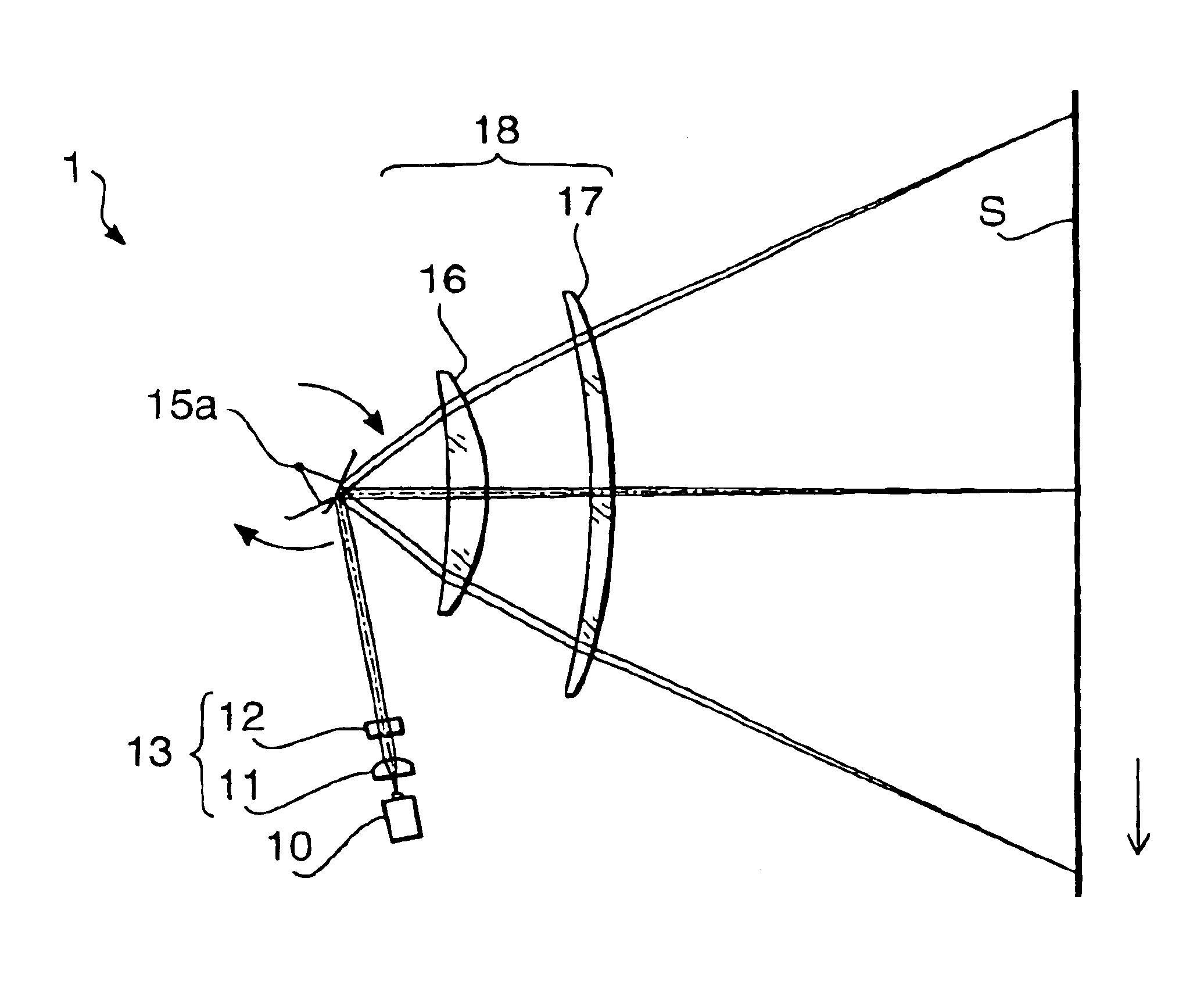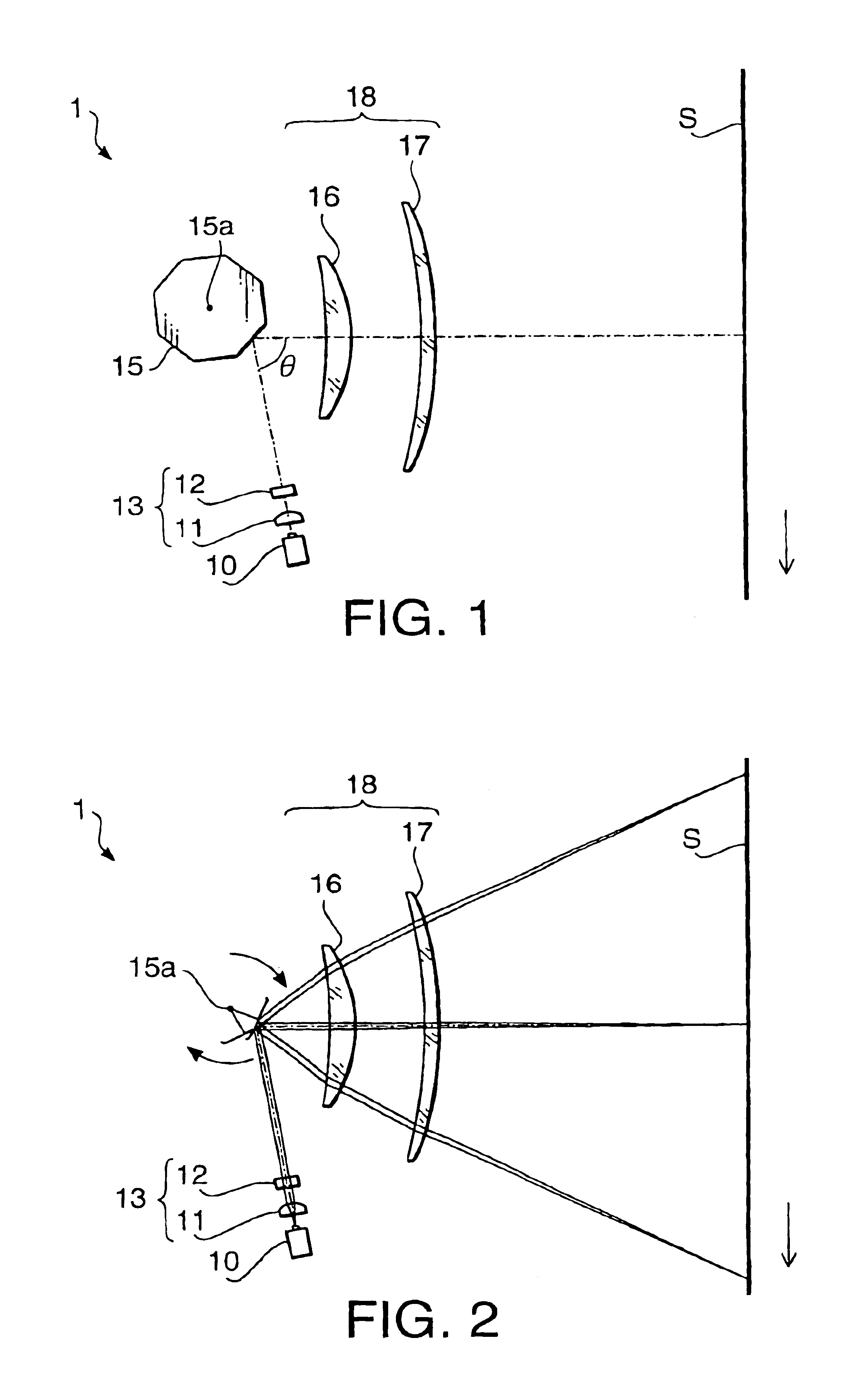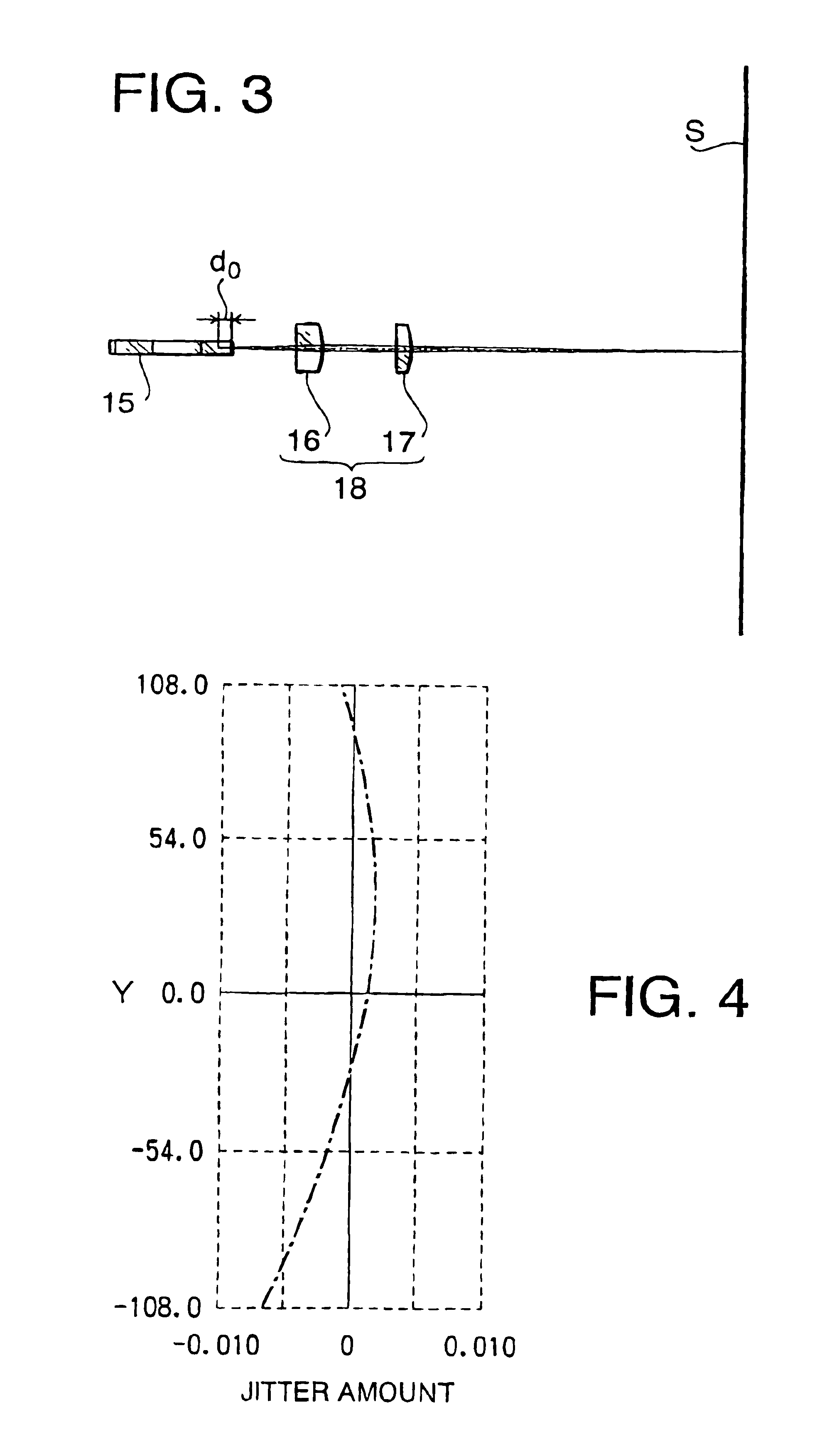Scanning optical system
- Summary
- Abstract
- Description
- Claims
- Application Information
AI Technical Summary
Benefits of technology
Problems solved by technology
Method used
Image
Examples
first example
[0093]A first example according to the embodiment of the present invention will be described. A scanning optical system of the first example has a configuration similar to the scanning optical system 1 according to the embodiment of the present invention. Therefore, the first example is explained using the configuration shown in FIGS. 1-3.
[0094]In the first example, a total focal length of the imaging optical system 18 is 150 mm. The imaging optical system 18 has the lateral magnification of −2.22 in the auxiliary scanning direction and has the half scanning width of 108 mm. The polygonal mirror 15 has the radius of the inscribed circle of 12.1 mm and has six reflective surfaces. The angle θ (see FIG. 1) formed between the beam proceeding toward the polygonal mirror 15 and the optical axis of the imaging optical system 18 in the main scanning direction is −80.0°.
[0095]When these values (m, w and f) are assigned to the condition (1), the radius of the inscribed circle of the polygona...
second example
[0106]A second example according to the embodiment of the present invention will be described. A scanning optical system of the second example has a configuration similar to the scanning optical system 1 according to the embodiment of the present invention. Therefore, the second example is explained using the configuration shown in FIGS. 1-3.
[0107]In the second example, a total focal length of the imaging optical system 18 is 150 mm. The imaging optical system 18 has the lateral magnification of −2.07 in the auxiliary scanning direction and has the half scanning width of 108 mm. The polygonal mirror 15 has the radius of the inscribed circle of 12.1 mm and has six reflective surfaces. The angle θ (see FIG. 1) formed between the beam proceeding toward the polygonal mirror 15 and the optical axis of the imaging optical system 18 in the main scanning direction is −80.0°.
[0108]When these values (m, w and f) are assigned to the condition (1) the radius of the inscribed circle of the polyg...
third example
[0119]A third example according to the embodiment of the present invention will be described. A scanning optical system of the third example has a configuration similar to the scanning optical system 1 according to the embodiment of the present invention. Therefore, the third example is explained using the configuration shown in FIGS. 1-3.
[0120]In the third example, a total focal length of the imaging optical system 18 is 140 mm. The imaging optical system 18 has the lateral magnification of −1.92 in the auxiliary scanning direction and has the half scanning width of 108 mm. The polygonal mirror 15 has the radius of the inscribed circle of 13.9 mm and has six reflective surfaces. The angle θ (see FIG. 1) formed between the beam proceeding toward the polygonal mirror 15 and the optical axis of the imaging optical system 18 in the main scanning direction is −80.0°.
[0121]When these values (m, w and f) are assigned to the condition (1), the radius of the inscribed circle of the polygona...
PUM
 Login to View More
Login to View More Abstract
Description
Claims
Application Information
 Login to View More
Login to View More - R&D
- Intellectual Property
- Life Sciences
- Materials
- Tech Scout
- Unparalleled Data Quality
- Higher Quality Content
- 60% Fewer Hallucinations
Browse by: Latest US Patents, China's latest patents, Technical Efficacy Thesaurus, Application Domain, Technology Topic, Popular Technical Reports.
© 2025 PatSnap. All rights reserved.Legal|Privacy policy|Modern Slavery Act Transparency Statement|Sitemap|About US| Contact US: help@patsnap.com



